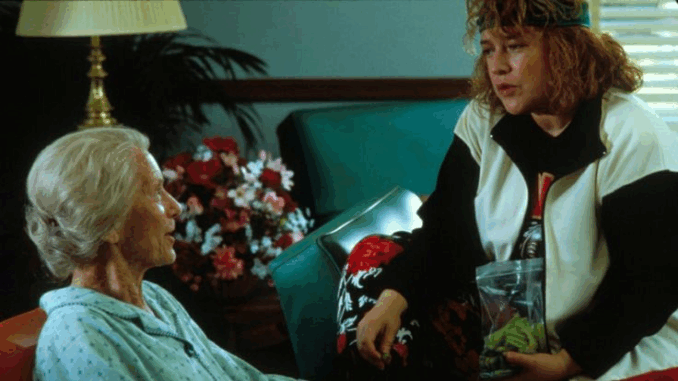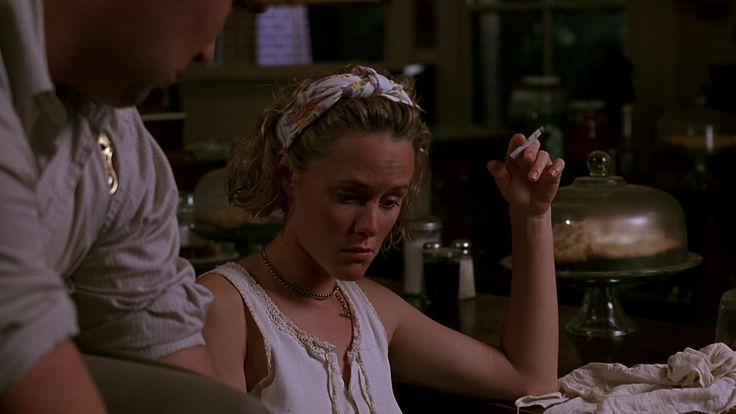
In a film filled with rich dialogue, laughter, and storytelling, it may be surprising to note that some of the most powerful scenes in Fried Green Tomatoes occur not in speech — but in silence. These moments, where characters say nothing at all, are often the most emotionally charged, expressing grief, love, rage, or understanding more clearly than words ever could.
This article explores how Fried Green Tomatoes uses quietness as a cinematic language — one that deepens its themes of loss, connection, and personal transformation.
When Words Fail: Idgie After Buddy’s Death
Perhaps the first and most haunting instance of silence is after the death of Buddy Threadgoode. Idgie, once bubbly and attached to her brother, disappears — emotionally and physically. She doesn’t deliver a dramatic monologue or cry in front of the family.
She simply withdraws.
The silence here is devastating. It:
-
Represents trauma too overwhelming to verbalize.
-
Signals the shattering of her childhood identity.
-
Sets the tone for how she will process pain moving forward — by doing, not speaking.
Her later acts of rebellion — drinking, gambling, running wild — all erupt from this unspoken grief.

Evelyn’s Stillness in the Café
Evelyn Couch undergoes a massive transformation throughout the film, but some of her most pivotal moments happen when she isn’t talking. One example is the way she listens to Ninny’s stories, not interrupting, not judging — just absorbing.
These scenes emphasize:
-
Her growing emotional openness.
-
The safety that comes from being heard (and from simply listening).
-
A quiet kind of respect between generations.
The silence between Evelyn and Ninny isn’t emptiness — it’s fertile ground for empathy to grow.
Idgie and Ruth: Love Unspoken
One of the most emotionally charged dynamics in the film is the relationship between Idgie and Ruth. Whether viewed as deep friendship or romantic partnership, their bond is undeniable — and yet, it is rarely, if ever, explicitly named.
They don’t need to say “I love you.”
Instead:
-
Idgie brings Ruth honey, even before they’re close.
-
Ruth clutches Idgie’s hand in silence during sickness.
-
They look at each other in ways that speak volumes.
Theirs is a relationship built on shared experience, mutual sacrifice, and unspoken loyalty — a love story that thrives in what’s left unsaid.
Time Passes Quietly
Even the structure of the film reflects this theme. Years pass with no major exposition. People die, children grow, wars end — and we learn about these through brief images, glances, or a few mournful piano notes.
This pacing shows that life’s biggest shifts don’t always come with fanfare. Sometimes change is slow, subtle, and silent. Sometimes people drift away not with screams, but with sighs.
The Role of Music: Silence Framed by Sound
Composer Thomas Newman’s score is minimalist but emotionally potent. Often, the music fades into near-silence, letting scenes breathe. A delicate piano or lingering violin note accompanies:
-
Ruth’s final moments
-
Evelyn’s moments of reflection
-
Idgie staring at the river, alone
These near-silent passages force the viewer to lean in emotionally — to feel, not just watch.
What Isn’t Said
What makes Fried Green Tomatoes so affecting is not just its heartwarming lines or sharp wit. It’s the gaps between the lines. The words that aren’t said. The goodbyes that go unspoken. The confessions that are never voiced, but fully understood.
And perhaps that’s the truest reflection of life itself — where many of our deepest emotions never quite make it to our mouths, but live forever in our gestures, our silences, our presence.
Final Thought: The Echo of Silence
In a world constantly demanding noise and explanation, Fried Green Tomatoes reminds us that silence isn’t emptiness. It’s presence. It’s tension. It’s memory.
Sometimes, the strongest connections are built not in grand declarations, but in shared silences under the Southern sky, with nothing but cicadas and memory for company.
